In layman’s terms, the difference between dynamic and condenser microphones is that the dynamic mic doesn’t use phantom power and it’s used for lower frequencies and live performances, compared to the phantom-powered condenser mic which is more delicate and suitable for transients and higher frequencies.
When it comes to the world of recording, it can be quite confusing on account of the vast array of equipment available, as well as some of the terminology which often isn’t self-explanatory.
However, with a bit of time, research, and experimentation, many of the concepts and terms start to make more sense.
Introduction to Microphones
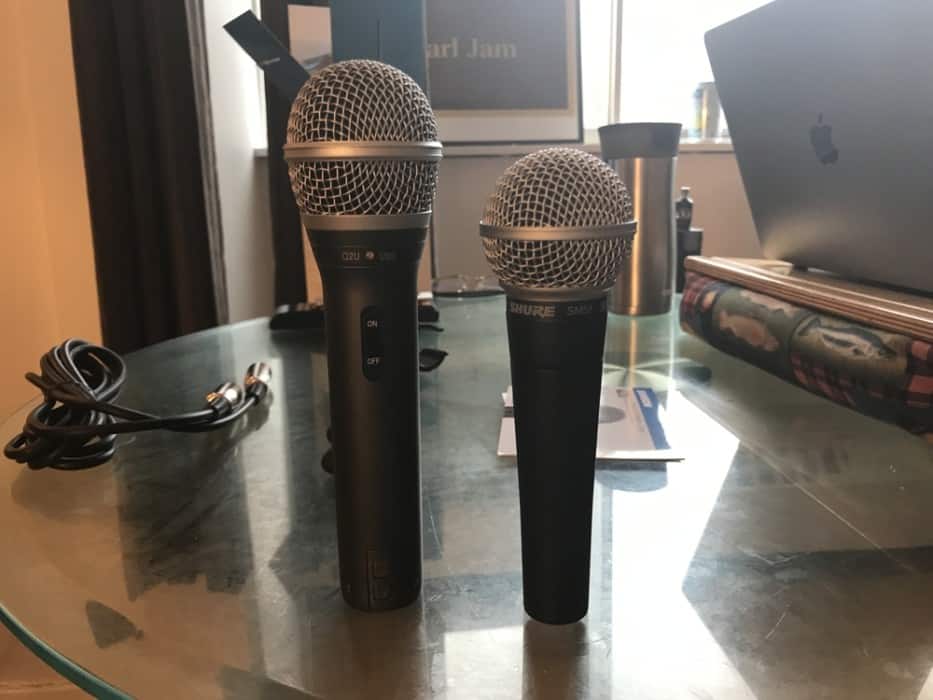
There are condenser microphones that don’t use phantom power and vice versa. More importantly, it is possible to use phantom power for a dynamic microphone, it’s just not needed.
According to Sweetwater, dynamic microphones made within the last 30 years won’t suffer damage as a result of phantom power, unlike ribbon microphones, which phantom power will often destroy.
As you probably already know, microphones are meant for capturing sound waves and they’re easily one of the most important tools for a recording engineer, musician, and producer.
If a recording engineer was a carpenter, the microphone would be like the Phillips, Robertson, or Flathead screwdriver, with each one serving ultimately the same purpose, but the minor differences between the types serving themselves much better to specific situations.
Moving away from the analogy, microphones can be used for a number of different purposes, and the type of microphone ultimately has an impact on how the sound is recorded including the final product.
For instance, the microphone type can make the recording sound darker, edgier, brighter, louder, bassier, or clearer. It depends on the microphone and what instrument it’s recording.
According to Timothy Dittmar, in his book, Audio Engineering 101, there are essentially three stages in recording sounds:
1) Picking up on the sound
2) Saving it
3) And then playing it back.
And the microphone plays into #1 in this three-step process: picking up on the sound.
Dittmar also says that when comparing and contrasting microphones, there are three main elements to look at:
1) Transducer or Element Type
2) Polar Pattern or Directional Response
3) Frequency Response
Using the three characteristics above, I’ll explain the differences in construction between dynamic condenser microphones and why one is better for a specific purpose over the other.
I’ll also list some examples of the different models of dynamic and condenser microphones in case you want to look them up later.
Dynamic Microphones
Construction of a Dynamic Microphone
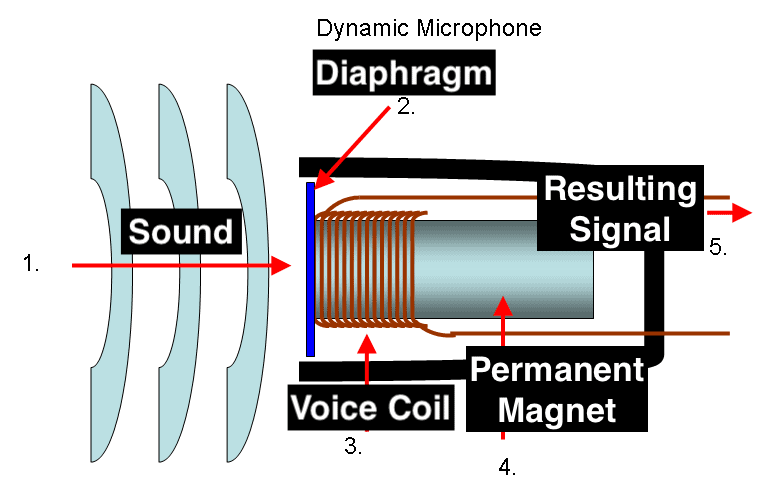
When looking at the image above, you can see the dynamic microphone has three primary components: the diaphragm, the voice coil, as well as the permanently charged magnet.
When sound waves travel through to the diaphragm, it vibrates the voice coil.
The permanent magnet creates a magnetic field, and within that magnetic field, the movement of the voice coil turns audio signals into electrical signals which are then reproduced by either the audio interface or by an amplifier.

Due to the lack of sophistication within the internal components of a dynamic mic, it ends up being a more durable, resilient microphone, that’s able to withstand higher sound pressure.
Moreover, dynamic mics can handle being dropped a lot more than a condenser microphone as a result of the simplicity of the inner components.
Without a doubt, the Shure SM58 or the Shure SM57 are two of the most commonly suggested dynamic microphones on the market, especially the latter of the two.
The Shure SM58 shines especially for live recordings, whereas the Shure SM57 is more for recording in a studio session.
At the end of Dittmar’s aforementioned book, he speaks with a number of professional engineers, and nearly all of them recommend purchasing a Shure SM57 as a starter mic for beginner engineers.
Features Of Dynamic Microphones
1) Dynamic Microphones are Tough
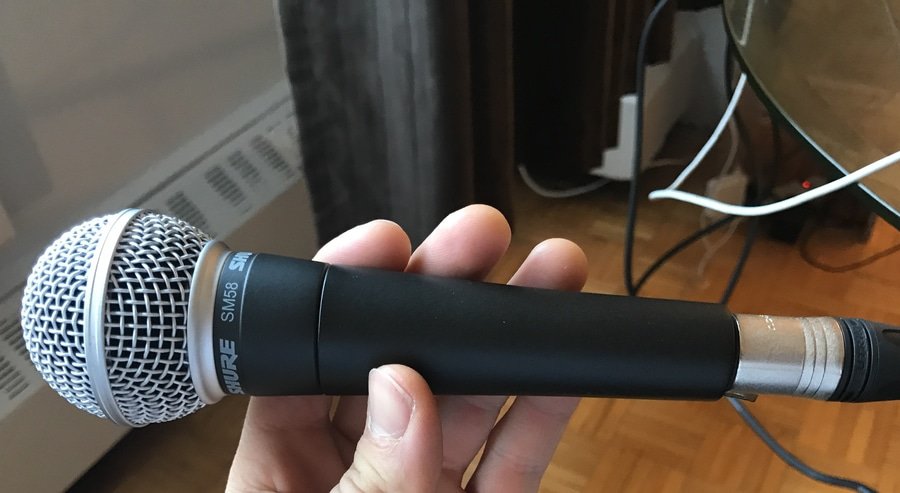
There’s no question that dynamic microphones are incredibly durable and tough mostly as a consequence of their more simplistic design.
Due to the simplicity of its internal components and the lack of delicate parts, the microphone is more rugged.
If you’ve already read my article on what microphone you should choose for your home studio, you’ll know that the Shure SM58 is famous for its durability. You can read that article here.
This is a common feature of the dynamic microphone, but the Shure SM58 especially. It’s hard to tell how tough it is from a picture, but when you hold it in your hand, its resilience is obvious.
A dynamic microphone is a fantastic option for very loud sounds, especially in a live setting, like a concert.
Dynamic mics such as the Shure SM58 can also handle plosive sounds a lot more, for instance, the “p” sound.
If you were to go into a music shop right now and ask what microphone one should get right away, chances are the clerk would hand you a Shure SM58 or a Shure SM57, depending on whether you intended on performing with the microphone, recording vocals, or recording instruments with it.
2) Great for Close Up Recording
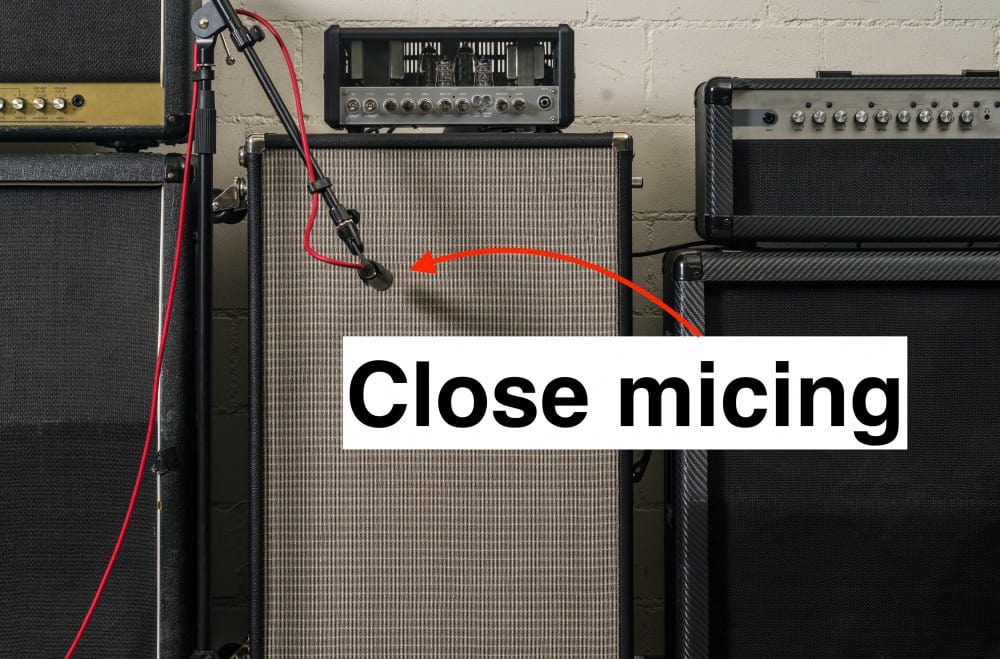
It’s not uncommon for dynamic microphones to be used for close micing. What this means is you can place a dynamic microphone right near the instrument or right up to the amplifier, due to its durability and resiliency to the sound pressure levels.
This is something you wouldn’t want to do to a more delicate microphone, such as an Audio Technica AT2035 Condenser Microphone.
Put simply, it’s not going to matter much if a dynamic microphone is smacked on the head with a drum stick.
It should be able to withstand that pressure.
3) Better for Live Performances

Dynamic microphones, due to their durability, tend to be used more for live shows and concerts as well.
Dynamic mics can withstand more damage, including being dropped dozens of times, having beer spilled on them, etc.
I’m sure there are cases where a condenser microphone is used for live shows, but from what I understand, the general trend is for dynamics to be used.
More importantly, the fact a dynamic mic doesn’t need phantom power to work at its optimal level makes it a better unit for performances.
4) Frequency Response
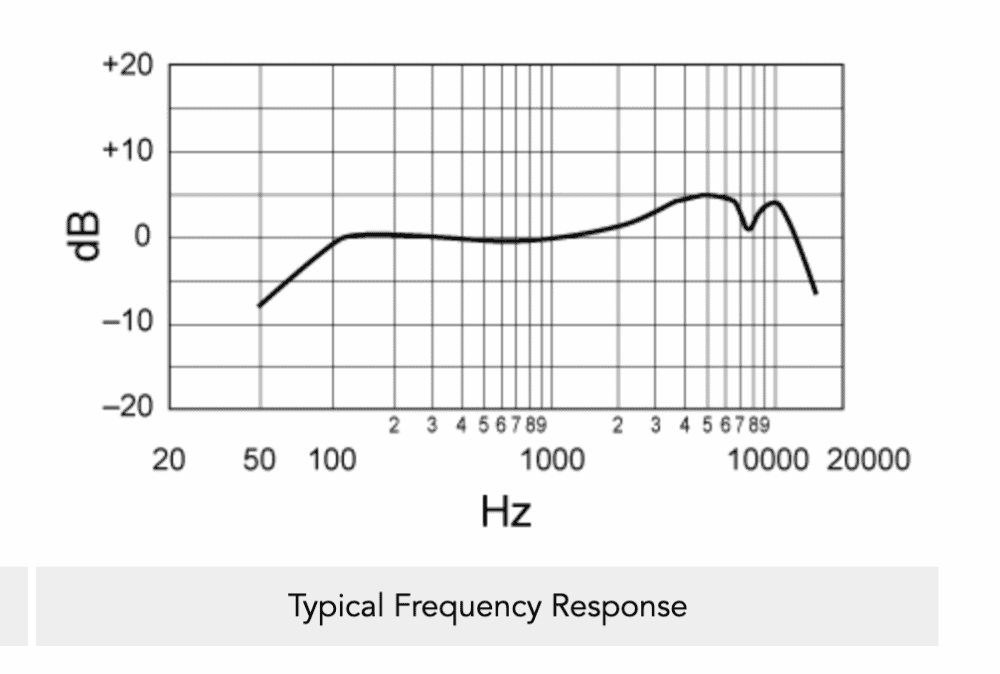
The frequency response of a dynamic microphone is also fairly different.
It’s not uncommon for a dynamic microphone to have a frequency response between 40Hz and 15,000kHz.
Playing into what I’ve already said above, you can see why the dynamic microphone isn’t meant as much for recording delicacies and transients. Because if you wanted to hear frequencies above 15,000kHz, the dynamic microphone wouldn’t cut it.
Put simply, you’re just getting the meat and potatoes of the sound, rather than the most subtle among the sound waves.
5) Dynamic Microphones Tend To Cost Less

Dynamic microphones are usually less expensive than condenser microphones.
This one is more controversial and debatable because surely, you can get your hands on a dynamic microphone that is a lot more expensive than a condenser microphone.
However, the general trend is that a budget dynamic microphone will cost less than a budget condenser microphone.
For instance, compare the price between a Shure SM58 (dynamic) and an Audio Technica AT2035 (condenser).
Common Dynamic Microphones
As I’ve already mentioned, there are a number of super common and famous dynamic microphones, including the aforementioned Shure SM58, Shure SM57, Rode Procaster, Sennheiser MD421, the AKG D 112, Shure SM7b, Electrovoice RE 20, and the Audix D1-D6.
Put simply, if you’re in the market for an all-purpose, tough, reliable, microphone that will get the job done, including for live performances, but may not be the best at picking up the most delicate of sounds, then the dynamic microphone is for you.
But if you’re in the market for something a little more delicate and detailed, then maybe it’s time to look into a condenser microphone.
Condenser Microphones
Construction of a Condenser Microphone
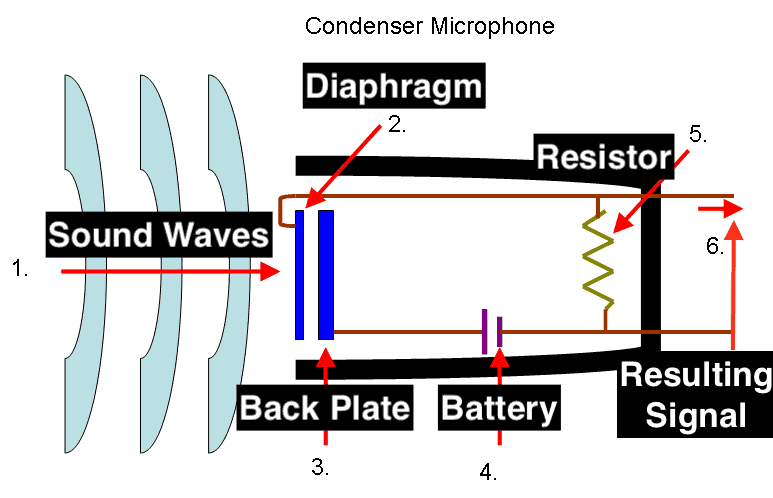
A condenser microphone ultimately has different internal components compared to a dynamic mic.
A condenser mic has a diaphragm, back plate, battery, and a resistor. The entire unit is called a “capacitor,” but it used to be called a “condenser,” hence the name “condenser microphone.”
The primary difference between condenser and dynamic mics is that the condenser microphone uses an electrically charged backplate and a diaphragm, rather than just a voice coil and a magnet.

Whenever sound waves travel into the microphone and strike the diaphragm, it changes the spacing between the backplate and diaphragm which then translates audio signals into electrical signals.
Once the audio signals have been converted into electrical signals, the audio interface or amplifier is able to reproduce the sounds.
More Explanation:
The components of a microphone which pick up and reproduce sounds are called capsules or transducers, regardless of whether we’re talking about dynamic or condenser mics.
And one of the great things about using a condenser mic, is that the transducer tends to weigh less than that of a dynamic element.
Put simply, the electrically charged backplate + diaphragm set-up of the condenser mic weighs less than the voice coil + magnet set-up.
It’s for that reason that the condenser mic is able to pick up on more delicate sounds. It’s because the transducer weighs less, and is more able to move quickly in response to sounds and high frequencies.
The Audio Technica 4050 is one of the more commonly recommended condenser microphones on the market, however, I would suggest grabbing an AT2035 or AT2020 instead because it’s cheaper and is more friendly to a beginner.
Features Of A Condenser Microphone
A condenser microphone like the AT2021 which I’ve written about before is a great tool for picking up on delicacies of a sound, including the transients, and the final result is typically a lot more clear.
Let’s unpack the term “transients,” because that’s going to explain a condenser microphone a little better and offer more context for what this type of mic actually does. Put simply, a transient is the quick explosion of energy at the beginning of a sound’s creation.
For instance, if you’ve ever used a pop filter before – a tool meant to capture plosive sounds like the “p” sound when talking into a microphone – what you’re doing is you’re eliminating the plosive transients.
A condenser microphone is much better for picking up on these transients, especially higher frequency transients.
A good example of a condenser microphone at work is a small diaphragm condenser microphone on an acoustic guitar.
If you want to capture as much of the natural acoustic guitar sound as possible, then an SD condenser mic is for you.
1) More Sensitive – Better Transient Response
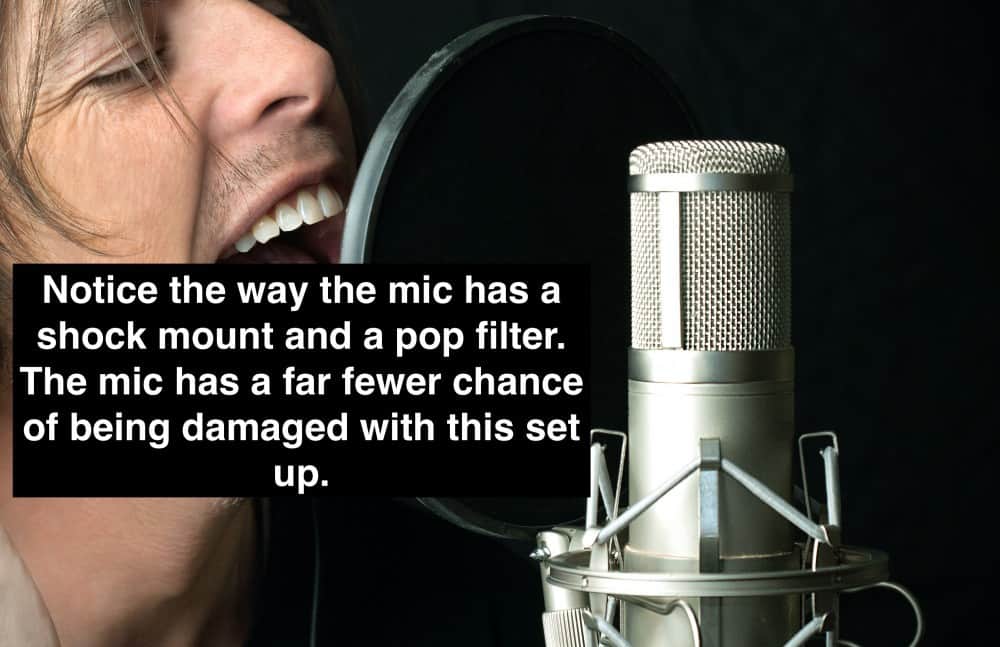
Due to the condenser microphone’s exceptional ability at picking up on these transients, such a microphone is great for picking up on the most delicate of sounds, including higher frequencies that are often harder to hear and far more quiet.
Using the example of an acoustic guitar recording, a condenser microphone is often the mic of choice for acoustic guitars because it’s going to reproduce more of the detail, including the sound of the pick hitting the strings, the fingers moving across the strings, as well as the sound of the vibrating strings altogether.
Many people describe condenser microphones as adding more “airiness” to the sound. On account of the lighter transducer, it tends to respond better to low-amplitude or quiet sounds.
2) Requires Phantom Power

This is one of the key differences between a dynamic microphone and a condenser microphone.
The vast majority of condenser microphones need an external charge, also known as phantom power, and this feature is often labeled as +48 V on standard audio interfaces and other recording gear.
3) Easier To Break

Condenser microphones, on account of their delicacy, are also a lot easier to break, and it’s one of the reasons why you’ll never see a live singer using a condenser microphone.
If you drop a condenser microphone or smash it with a drum stick, it might kill the microphone.
4) Usually have a DB Pad
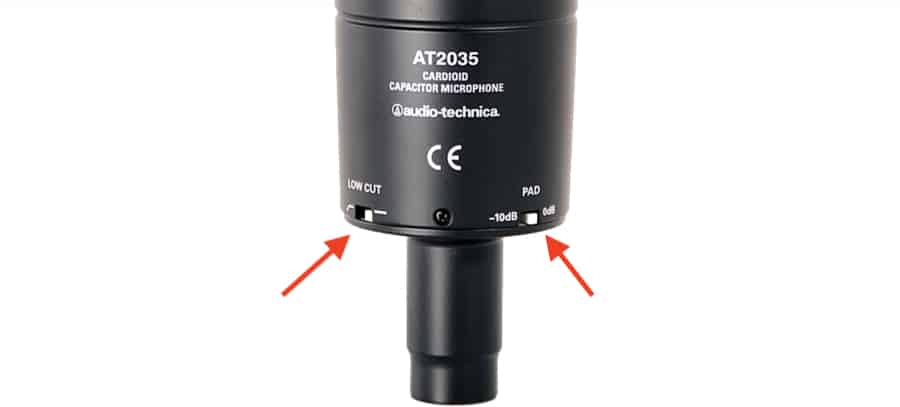
Condenser microphones usually come with a DB pad, as well, which is a setting that will cut the signal down by the designated amount.
This is one of the ways of distinguishing between a dynamic microphone and a condenser microphone, in case you’re unable to tell just by looking at it.
5) Frequency Response

As I mentioned in passing above, the frequency response of a condenser microphone tends to be much wider as well, which I imagine you were able to guess by simply reading what I’ve already explained.
The frequency response of a condenser microphone is commonly between 20Hz and 20,000 kHz.
Put simply, it’s much better at capturing nearly all of the frequencies that the human ear can hear.
Common Condenser Microphones
Some of the most commonly seen condenser microphones are the Audio Technica AT2035, Shure KSM27, Rode NT1, AT4050, Blackout Spark SL, AKG C414, Sony C-100, or the Neumann U47.
The final microphone in the above list, Neumann U47, is a legendary microphone that’s commonly held as one of the best on the market.
Another point that’s worth mentioning about condenser microphones is that they tend to come in two options, the Large Diaphragm Condenser or the Small Diaphragm Condenser.
Small Versus Large Diaphragm Condenser Microphones
The diaphragm of a microphone is a thin membrane that moves in relation to sound waves.
They’re extremely thin, and as a consequence of the way they move, they play a crucial role in communicating sound.
The primary difference between the Large Diaphragm and the Small Diaphragm is the mass and the size of the diaphragms.
Large Diaphragm Condenser

A large diaphragm is obviously much bigger than the small diaphragm.
And this fact plays into how they look. Put simply, a large-diaphragm condenser microphone is literally a much bigger product.
The large-diaphragm are much thicker and heavier, so while they’re still a fast microphone that’s great for picking up transients, they’re not as quick as the small diaphragm.
And this actually has an effect on their sound compared to the smaller diaphragm, which uses a much lighter diaphragm.
Many people argue that the large-diaphragm condensers sound heavier in the lower frequency range, which means they tend to sound warmer, and more natural.
Small Diaphragm Condenser

A Small Diaphragm Condenser Microphone, on the other hand, is literally a lot smaller.
They’re often referred to as a Pencil Condenser because they’re a lot thinner.
Small diaphragm condensers are commonly described as faster and more suited for higher range frequencies.
Put another way, they’re brighter and more “airier.”
In summary, the small diaphragm condenser is better for higher frequencies and transients, whereas the large-diaphragm condenser microphone is better for lower-range frequencies.
When To Use The Small Diaphragm and The Large Diaphragm
Common Small Diaphragm Applications
- Piano
- Acoustic Guitar
- Stringed Instruments
- Drum Overheads, Snare, Hi-hat, Cymbals, and Percussion
If you want to record a cymbal, and you want to get the sound of the stick hitting up against it, then the small diaphragm is going to be much better at serving this purpose because it’s much faster and more able to pick up on those transients.
Furthermore, the small diaphragm microphone tends to be much better for recording acoustic guitars as well, although, a large-diaphragm condenser will sound good too, so if you already own one or the other, know you’re not missing out.
Common Large Diaphragm Applications
- Vocals
- Guitar and Bass Amps
- Acoustic Guitar
- Big Brass Instruments.
According to Sweetwater, large-diaphragm microphones are commonly used when the goal is to make the recording sound much larger or have more “color.”
YouTube Video Tutorial
Conclusion
All-in-all, that’s it for the primary differences between the condenser and dynamic microphone.
There are more microphones to touch on as well, including the ribbon microphone, which is different between both the dynamic microphone as well as the condenser.

 Written By :
Written By :